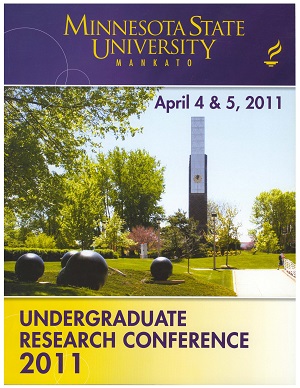Event Title
Classification of Childhood Cancer Subtypes from Microarray Data
Location
CSU 204
Start Date
4-4-2011 11:00 AM
End Date
4-4-2011 12:30 PM
Student's Major
Mathematics and Statistics
Student's College
Science, Engineering and Technology
Mentor's Name
Namyong Lee
Mentor's Department
Mathematics and Statistics
Mentor's College
Science, Engineering and Technology
Description
Neruroblastoma, rhabdomyosarcoma, non-Hodgkin lymphoma, and the Ewing family of tumors are four subtypes of childhood cancers. Each year more than 65,000 children are affected by these cancerous tumors. Symptoms may vary and are often fatal. Therefore, it is essential that these cancers are correctly diagnosed and classified because of different treatment options. However, these four cancers are often difficult to distinguish between and accurately identify by normal methods of diagnosis. A microarray analysis distinguishes between the cancers by determining which set of genes are active in an organism. The purpose of this research was to explore a statistical method called SCOOP (Shrunken Centroid Ordering by Orthogonal Projections) to see if it could accurately identify the type of cancer for each patient based on the information from the microarray data. Then, the method could be applied to new patients to accurately diagnose them.
Classification of Childhood Cancer Subtypes from Microarray Data
CSU 204
Neruroblastoma, rhabdomyosarcoma, non-Hodgkin lymphoma, and the Ewing family of tumors are four subtypes of childhood cancers. Each year more than 65,000 children are affected by these cancerous tumors. Symptoms may vary and are often fatal. Therefore, it is essential that these cancers are correctly diagnosed and classified because of different treatment options. However, these four cancers are often difficult to distinguish between and accurately identify by normal methods of diagnosis. A microarray analysis distinguishes between the cancers by determining which set of genes are active in an organism. The purpose of this research was to explore a statistical method called SCOOP (Shrunken Centroid Ordering by Orthogonal Projections) to see if it could accurately identify the type of cancer for each patient based on the information from the microarray data. Then, the method could be applied to new patients to accurately diagnose them.
Recommended Citation
Groskreutz, Katie. "Classification of Childhood Cancer Subtypes from Microarray Data." Undergraduate Research Symposium, Mankato, MN, April 4, 2011.
https://cornerstone.lib.mnsu.edu/urs/2011/oral-session-05/3



